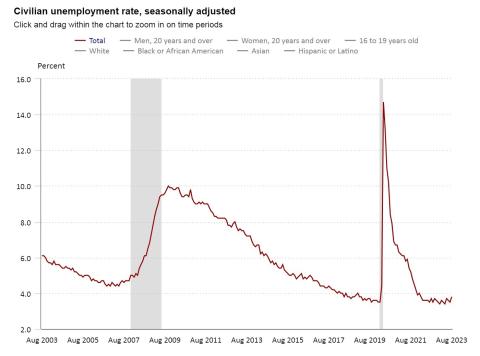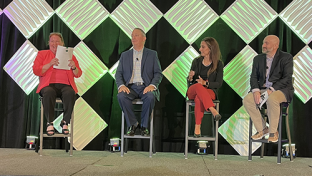Is the Tight Job Market Loosening?

As U.S. workers observe Labor Day on Monday, Sept. 4, they are part of a broader pool that is still feeling the aftershocks of the pandemic and acute labor shortages that marked much of 2022. Heading into fall, new trends are emerging that impact employers and employees across many business sectors, including the grocery industry.
According to the latest jobs report from the U.S. Bureau of Labor Statistics (BLS), the general unemployment rate rose to 3.8% in August, as 6.4 million Americans were out of work. More than 187,000 jobs were added to worker rolls last month. About 4.2 million people were employed part time in August — similar to July’s number — but they would have preferred full-time employment.
[Read more: “How Grocers Can Attract and Retain ‘New Collars’”]
There was little change in the retail trade segment from the prior month. Approximately 6,300 jobs were added in retail trade in August compared to 13,200 in July and versus a drop of 22,700 in June.
Earlier this week, a national employment report from human resources software company ADP affirmed that private sector hiring in the United States came in lower than expected in August. Private payrolls increased by 177,000 during that period, ADP found.
The latest government and private firm data, along with another recent BLS report showing a lower-than-anticipated number of job openings, points to a softening of the labor market. Heading into the busy holiday season, then, employers in the retail sector may not face the same tight market they did last year.
At the same time, employers are looking at other changes and trends in the market. The Labor Department recently proposed a new rule on overtime pay for salaried workers, making those who earn under $55,000 a year eligible for overtime compensation. Salaried employees within that threshold could get higher pay of time and a half when exceeding 40 hours a week.
Meanwhile, companies that based their operations from an office are facing their own labor dynamics. A new survey from The Conference Board shows that nearly three out of four companies (73%) struggle with getting workers to return to the physical workspaces. According to The Conference Board’s latest report, 68% of organizations are considering or implementing strategies to bolster onsite work.
That sentiment was underscored in the recent reaction to comments from Amazon CEO Andy Jassy, who was quoted by several media outlets as telling staffers during an internal Q&A meeting that, “it’s probably not going to work out for you at Amazon” if workers won’t go back to the office at least three days a week. After Amazon announced its new hybrid policy, several thousand workers signed a petition protesting the change and others staged a walkout.






